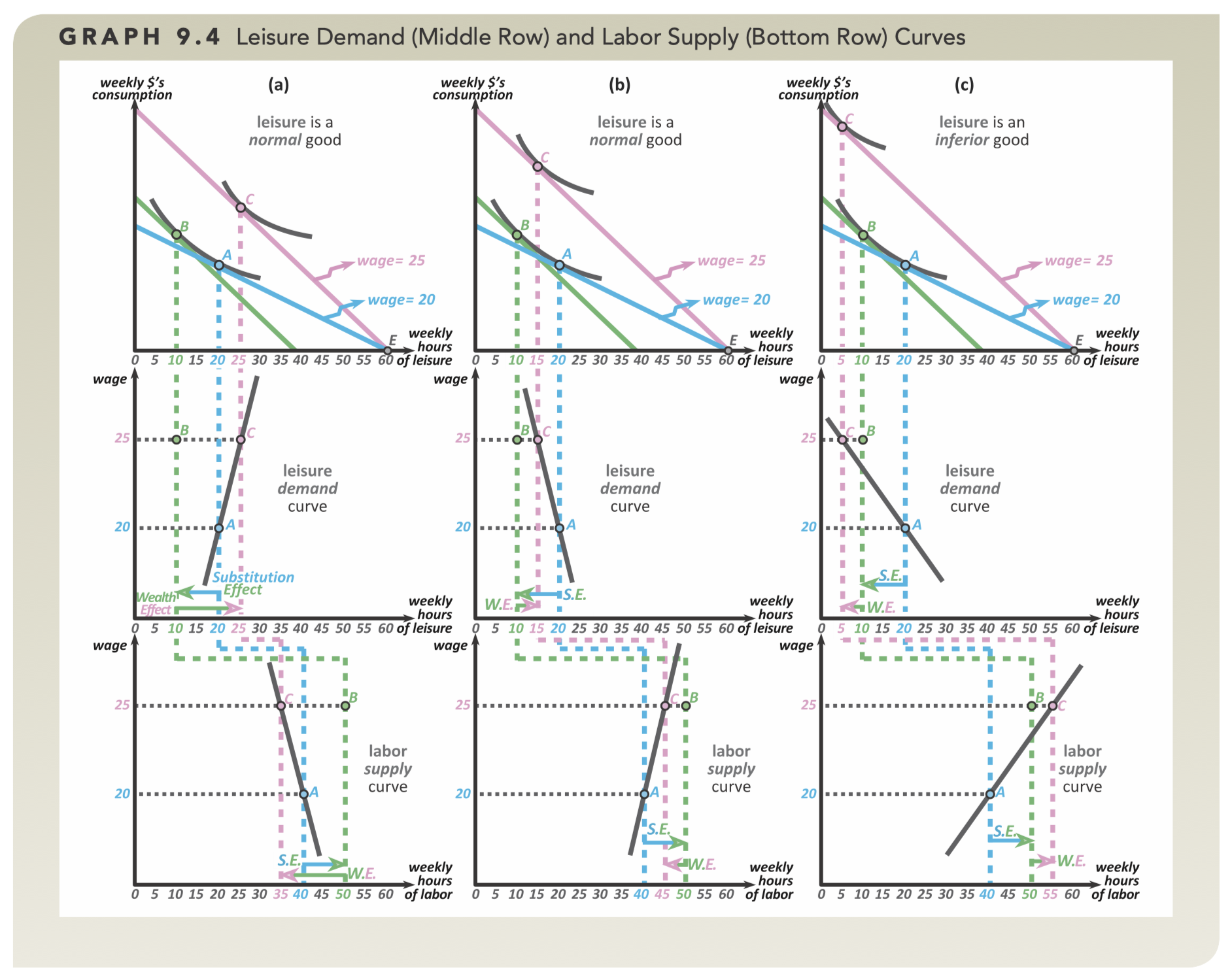Abstract
- The canonical, standard demand curve when we normally say “demand of good ”
- In theory, it should be the actual demand curves of individuals
- All Marshalian demand curves are HD0 in
How to Derive OPDC
Visually:
- Plot the indifference map and budget line for goods and x_2=\text{"\ of other goods”}x_1p_1A(x_1,p_1)$
- Change the price ; i.e. change the gradient of the budget. See what substitution and income effects it produces.
- Then find the optimum bundle for the new price: . Connect these points together.
Analytically:
- using Utility Maximization
- you will get
- i.e. quantity demanded as a function of prices and income
- This is the demand function → plot this to get demand curve
As stated above: OPDC must be HD0; check if it is!
Analysis of Goods
- In a demand curve, Price is the negative gradient of the budget line. (, and we defined p_2=\1$)
Depending on Price
- Ordinary goods’s demand functions are homogenous in
- → Inflation in all prices as well as income doesn’t change anything
Depending on Income

- Graph (a) shows a normal good’s OPDC.
- Graph (b) and (c) shows a inferior good’s OPDC.
- Graph (c) is the strange Giffen Good.
Labor Supply Curve
See also Utility Maximization with Endowments
Deriving the Labor Supply Curve works similarly to the OPDC, with the following differences:
- = (gradient of budget line) = (opportunity cost of leisure in dollars) = (wage)**
- There’s no exogenous income. You’re endowed a bundle with zero consumption and certain hours of leisure.
- → You can “sell off” your leisure hours at price
Thus as wages increase (= price of leisure in dollars)
- → the shift in the budget line happens from blue→pink in graph below…
- …with a stationary leisure endowment at the x-intercept and a clockwise rotation.
- Then after you draw the OPDC for leisure, you flip the curve horizontally. (since .)

- Graph (a) shows the case where leisure is a normal good, but IE > SE.
- Graph (b) is Normal good, IE < SE.
- Graph (c) shows when leisure is an inferior good.
Warning
When discussing labor supply, the Income Effect (IE) is called the wealth effect (WE). We’re not discussing why.
Backward Bending Supply of Labor
In real life, labor supply curves look like this:

This is because workers will trade-off leisure and work hours.
→ the higher the person’s wage, they will work more; but at some point their wage is large enough and they start to enjoy life more. This is called the Backward Bending Supply of Labor.
Interesting IRL Analysis
cdixon | How bundling benefits sellers and buyers